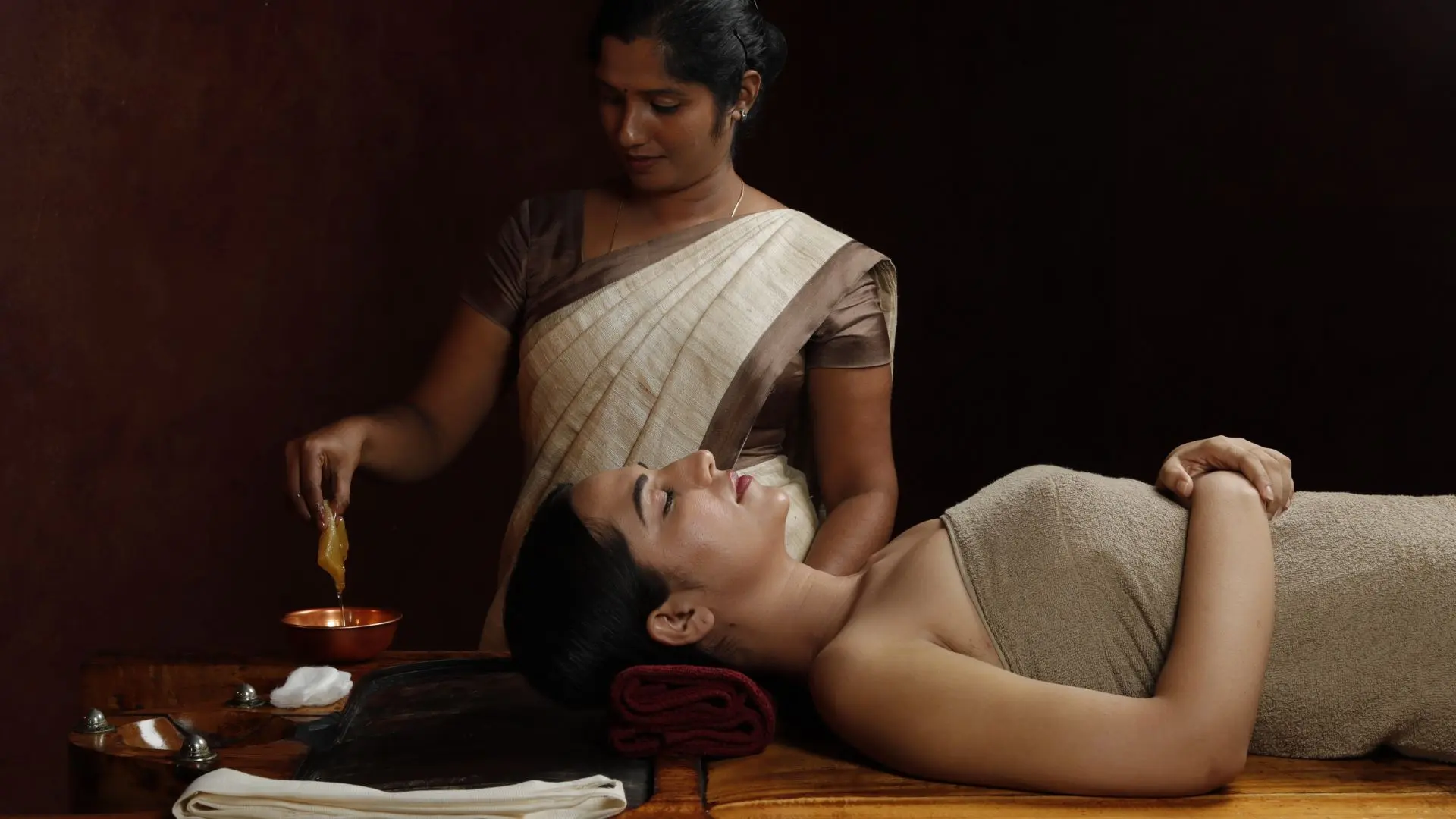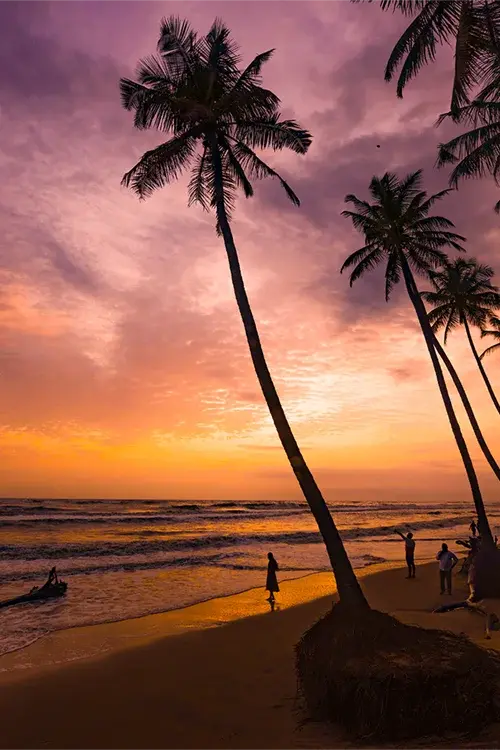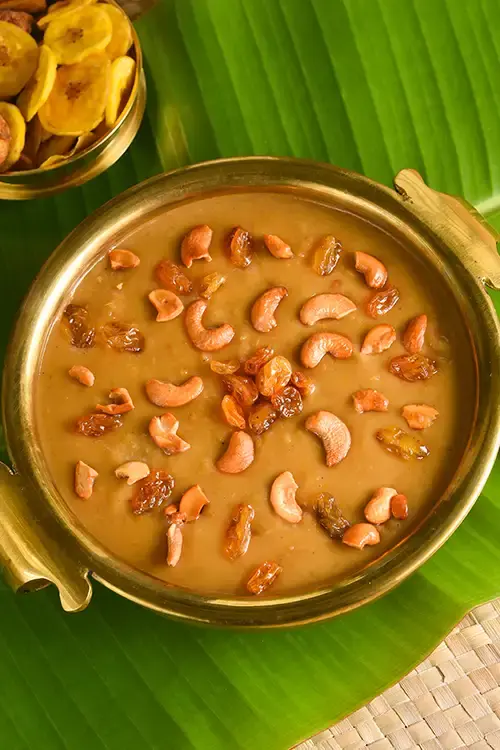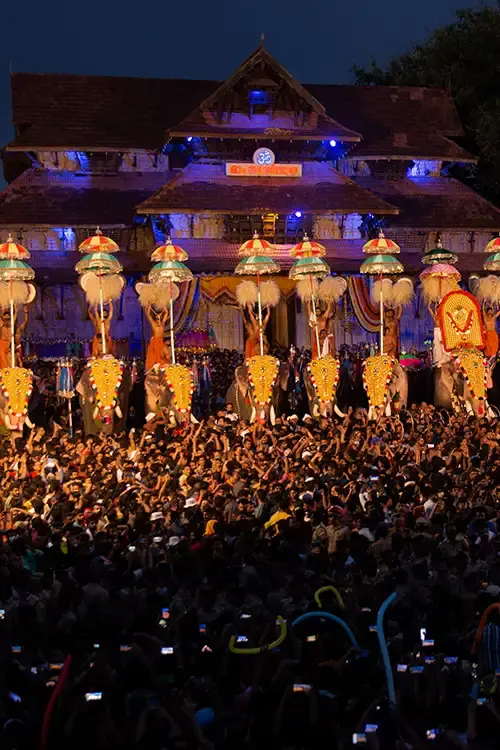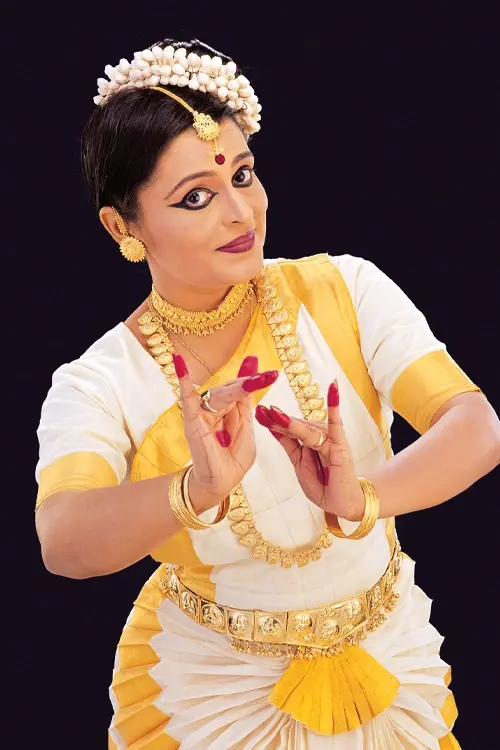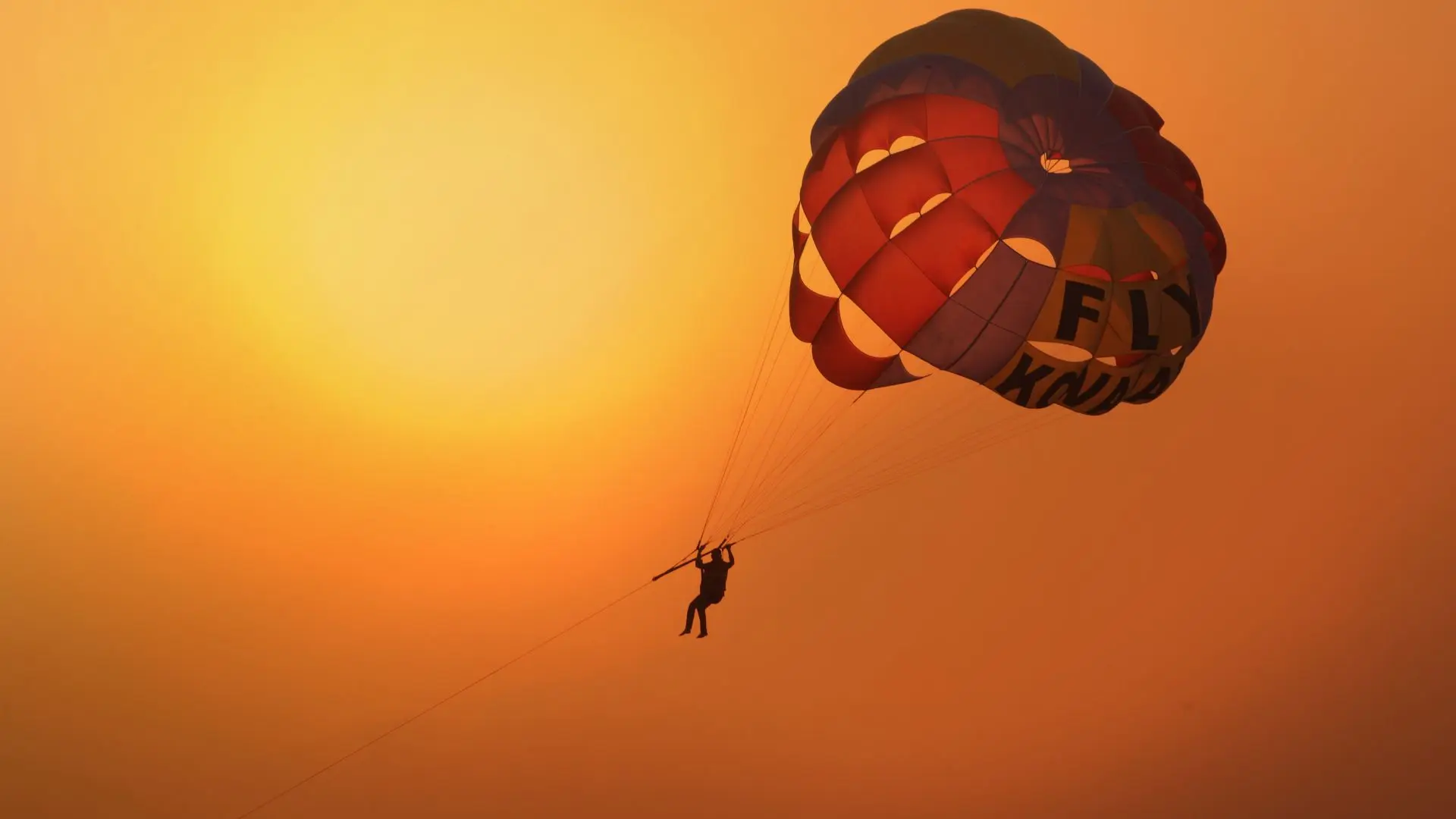FAQ
What is Kathakali and How it is Different from Other Indian Dances?
Kathakali is more than just a dance performance. It's a cultural experience that showcases Kerala's rich heritage, storytelling traditions and artistic expression. It is a UNESCO-recognized masterpiece and a highly stylized classical dance-drama from Kerala. This classical dance form is noted for its elaborate costumes, dramatic makeup and unique performance style.
Let us understand some of the integral components of Kathakali.
Costumes: Kathakali performers wear elaborate costumes made of colourful silk and brocade. The headgear is distinctive, with specific headpieces representing different characters (crowns for kings, headbands for warriors).
Makeup: Facial makeup in Kathakali is extremely dramatic and symbolic. Different colours and designs depict the character's nature (green for noble characters, red for evil warriors). Skilled artists spend hours applying the makeup, creating larger-than-life personae.
Storytelling: Kathakali performances depict stories mainly from the Hindu epics, the Mahabharata and the Ramayana. The stories are narrated through a combination of dance movements, facial expressions and mudras (hand gestures).
Music: Kathakali is accompanied by captivating music played on instruments like the mizhavu (a huge copper pot whose mouth is covered with hide), chenda (cylindrical drum), cymbals and various wind instruments. The music creates a dramatic atmosphere and complements the storytelling.
Singers: These vocalists narrate the story and sing verses from the epics, guiding the audience through the plot.
Actors: The performers bring the characters to life through their stylized dance movements, facial expressions and mudras.
Training in Kathakali is rigorous and traditionally starts at a young age. Students undergo intense physical training, learn mudras and practise various dance techniques. Mastering the art form requires dedication, discipline and a deep understanding of the stories and characters.
